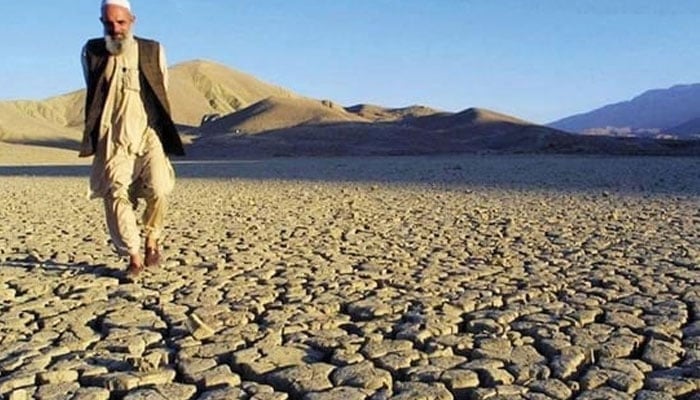The Pakistan Meteorological Department (PMD) has issued a warning about the alarming decrease in rainfall across the country, indicating a potential drought situation. This year’s rainfall has been significantly below average, causing concerns over water shortages, agricultural losses, and the overall environmental impact. The unusually dry conditions are expected to exacerbate existing challenges in key sectors, especially agriculture, which relies heavily on timely rain.
Unusual Weather Patterns and Their Impact
Pakistan has been experiencing irregular weather patterns, and the PMD’s report highlights a worrying trend of below-normal rainfall in many regions. This shift is largely attributed to the effects of climate change, which is contributing to more erratic weather conditions. The lack of sufficient rainfall could have severe implications for the country’s water reserves, food production, and livelihood, particularly in rural areas.
The PMD’s warning indicates that the dry spell could potentially lead to drought conditions, affecting large swaths of land that rely on seasonal rain. Experts believe that if the dry conditions persist, the country could face significant water shortages, impacting drinking water supplies and irrigation systems crucial for crop growth.
Agricultural Risks Due to Drought
Agriculture in Pakistan is heavily dependent on seasonal rains, particularly in areas like Sindh, Punjab, and Balochistan. The reduced rainfall poses a direct threat to crops, especially wheat, rice, and other staple foods. With the looming threat of drought, farmers are concerned about their ability to maintain their harvests, which could lead to a rise in food prices and scarcity.
Additionally, water scarcity resulting from below-normal rainfall could further strain irrigation systems, which are already under pressure in some areas. The lack of irrigation will make it harder for farmers to sustain their crops, leading to reduced yields and financial hardship for those who depend on agriculture for their livelihoods.
Water Resources at Risk
Water resources are another critical concern as Pakistan faces below-average rainfall. The country already experiences a significant water deficit, with many areas relying on groundwater and reservoirs to meet demand. However, these resources are not unlimited, and prolonged dry spells could lead to a reduction in water availability.
The government has been urged to take immediate steps to conserve water, including promoting more efficient water management practices and investing in infrastructure to store and distribute water more effectively. Without swift action, the country may find itself in a dire situation, struggling to meet its water needs in both urban and rural areas.
Potential Long-Term Effects of Drought
If the rainfall deficit continues, the effects of drought could be felt for years to come. Beyond the immediate challenges of food and water security, drought conditions could lead to long-term environmental damage, including soil degradation and loss of biodiversity. These impacts would not only affect Pakistan’s agricultural sector but also its broader economy and the livelihoods of millions of people.
Climate change is expected to exacerbate these issues, with more frequent and intense droughts becoming a regular feature of Pakistan’s weather patterns. As the global climate crisis intensifies, Pakistan’s vulnerability to extreme weather events increases, making it more essential than ever to adopt sustainable water and land management strategies.
What Can Be Done?
To mitigate the risks associated with the current weather conditions, experts are calling for immediate action. Key measures include improving water conservation techniques, investing in drought-resistant crops, and promoting better agricultural practices. The government and relevant authorities must also focus on climate change adaptation strategies to better prepare for future challenges.
Pakistan’s response to this warning will be critical in determining how it handles the ongoing dry spell. It is essential that the government and local communities come together to implement measures that can help minimize the impacts of drought and ensure the sustainable management of resources for the future.
Conclusion
As Pakistan grapples with the effects of below-normal rainfall, the threat of a potential drought looms large. The PMD’s warning serves as a crucial reminder of the urgent need to address the challenges posed by climate change, water scarcity, and food security. The country’s agricultural sector and water resources are under significant pressure, and proactive measures must be taken to mitigate the impact of the ongoing dry conditions.



Comments (0)
No comments yet. Be the first to comment!
Leave a Comment